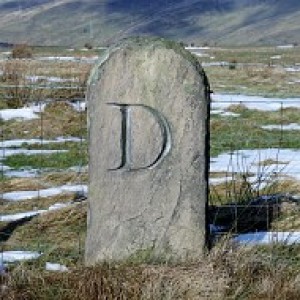Ty Hyll - The Ugly House
The Snowdonia Society rescued this well-known cottage from dereliction in the 1980s. Situated on the A5 at Capel Curig, until October 2010 it served as the Society headquarters. The Society have now moved to Caban, Brynrefail and 2011 sees an ambitious plan to turn T? Hyll into a Visitor Centre and a centre for the protection and promotion of the Welsh honeybee.
Though the true origins of the Ugly House remain shrouded in mystery, legend tells us that it was a crude house built in the 15th century by two outlaw brothers. It was a 'Ty Un Nos' - or house built overnight. Under ancient law, he who built a house between sunset and sunrise, with walls, roof and smoking chimney, could claim the freehold. However, Ty Hyll was probably built in the mid-nineteenth century as a 'Picturesque' cottage that would appeal to the growing tourist trade.
In the early 19th century, navvies working on Telford's new road and the bridge by the Ugly House may have taken over the cottage. They may have added a loft and new windows before abandoning the house when it was no longer near enough to their place of work. By the mid 19th Century, the Ugly House is included in 'A Tourist Guide to Wales' as a 'quaint cottage'. Its reputation grew so that more than a 100 years later visitors are still charmed by the old building.
Edward and Lilian Riley bought the Ugly House back in 1929. Edward, groom at the nearby Towers (then owned by a London cork manufacturer), divided the ground floor into three rooms, a tiny scullery kitchen, a living room and a parlour. He added steps to the first floor attic, where he made two bedrooms and a bathroom.
By 1988 the cottage was derelict, and was bought and restored by the Snowdonia Society. The renovation work was lovingly carried out by Peter Kirby, the husband of the Society's founder, the late Esmé Kirby. It is now a Grade II listed building, housing on its upper floor the Society's offices while the ground floor has a display about the Society's work; a small sales area and a depiction of how part of a 19th century Welsh cottage would have looked.
The once neglected 5 acres of garden and woodland now provide a pleasant and interesting walk.Volunteers, committed to the Society's goals, undertake management of the gardens surrounding the house. The cottage-style wildlife gardens are designed to attract and sustain wildlife and are organically managed.
The woodland trees are mainly sessile oak with some birch and hazel. Numerous bird boxes, particularly attractive to tits and pied flycatchers, have been put up throughout the woods. Further habitats are provided by the dry stone walls and piles of decaying logs. The wildlife pond was created in 2003, on the site of an old chalet, and is now well established. There is a woodland walk taking you through the grounds
- 0
- 0
- Panasonic DMC-TZ20
- f/4.0
- 4mm
- 100

Comments
Sign in or get an account to comment.


